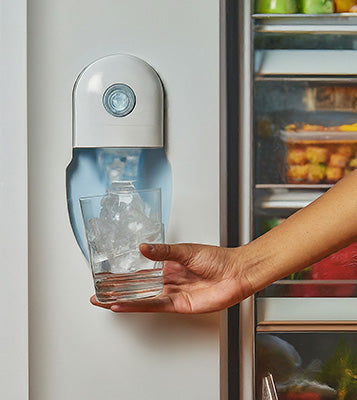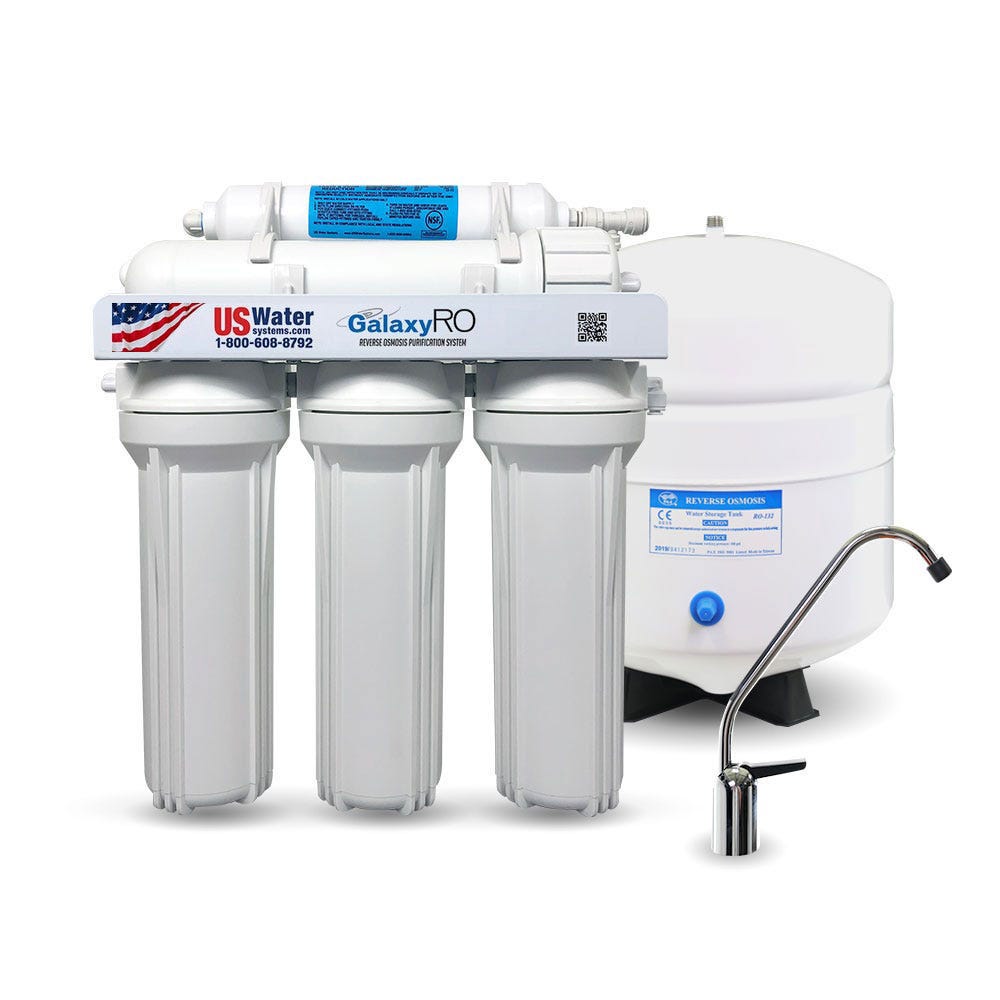Will an icemaker work with RO water?
First of all, you can make ice cubes from water produced by reverse osmosis systems.

In fact, ice made from reverse osmosis (”RO”) water produces cleaner, clearer and better tasting ice cubes because most of the contaminants are removed from the water. So, just because water is purified by a certain process, (in this case, reverse osmosis), has no bearing on whether you can make ice. I prefer “clean ice” - in many cases it is perfectly clear, except for a little cloudiness in the center of the cube.
Another benefit is that the cube is harder and melts slower. Most people like that as well. So, why would an ice machine technician tell you that RO water won't work on an ice machine? I suspect that his experience is that he has seen many situations where he is called on a service call and found that when the reverse osmosis system was disconnected and the ice-maker was connected directly to the house supply, it worked. That doesn't mean that RO water won't make ice cubes, however. When you supply an adequate volume of water at an adequate pressure, any ice-maker will produce excellent cubes. The problem with an RO system on ice-makers (especially the “basement bar-type” machines) is that those types of ice machines use a large amount of water.
Believe it or not, some of those machines can use 80-90 gallons of water a day! Unless you have a high volume reverse osmosis system, it is futile to try and supply RO water to that kind of ice-maker. Another issue is pressure. Many new ice machines require 30-40 PSI (pounds per square inch) to function properly. A residential RO system drops the incoming pressure by 30-35% If you are starting out with 70-80 PSI, that is acceptable, but if the incoming water pressure is 40-60 PSI, there may be a problem. Volume and pressure are separate problems. You may have enough pressure to operate an ice machine, but not sufficient volume and it's not as simple as adding another tank with plenty of volume and little pressure.

Sizing a reverse osmosis system is critical when you have multiple outlets, especially if one or more is an under-the-counter ice-maker. Most residential reverse osmosis systems are 24 to 50 GPD (gallons per day), which is not nearly enough for such an ice-maker. Additionally, production is reduced whenever the water temperature is below 77 degrees F, and whenever the pressure is below 60 PSI. In the real world, a 50 GPD reverse osmosis system in the Midwest may produce 20-25 GPD, when the demand may be up to 150 GPD. However, there are solutions, and they do not have to be extremely expensive.
One solution is to install a larger system, such as a 300 GPD system or a high production system. Another solution is to boost the incoming pressure with a booster pump or boosting the system pressure to 80 PSI with a Demand Delivery Pump. Look for these under out reverse osmosis systems. This type of system will provide plenty of high quality, great-tasting RO water, without running out! So, you can use RO water on ice machines (we install RO systems on very large commercial machines). They just have to be sized properly.






Leave a comment
Please note, comments need to be approved before they are published.